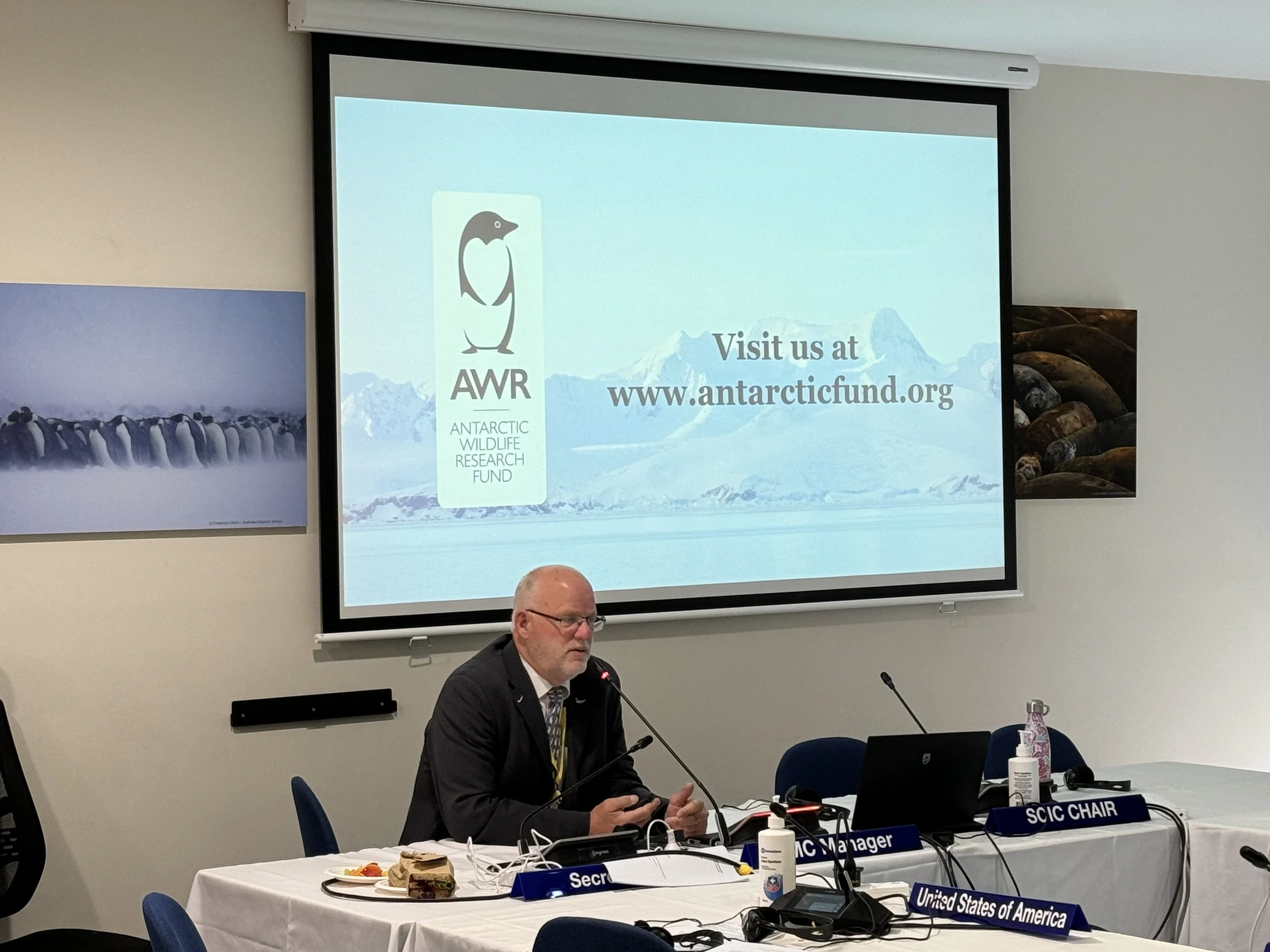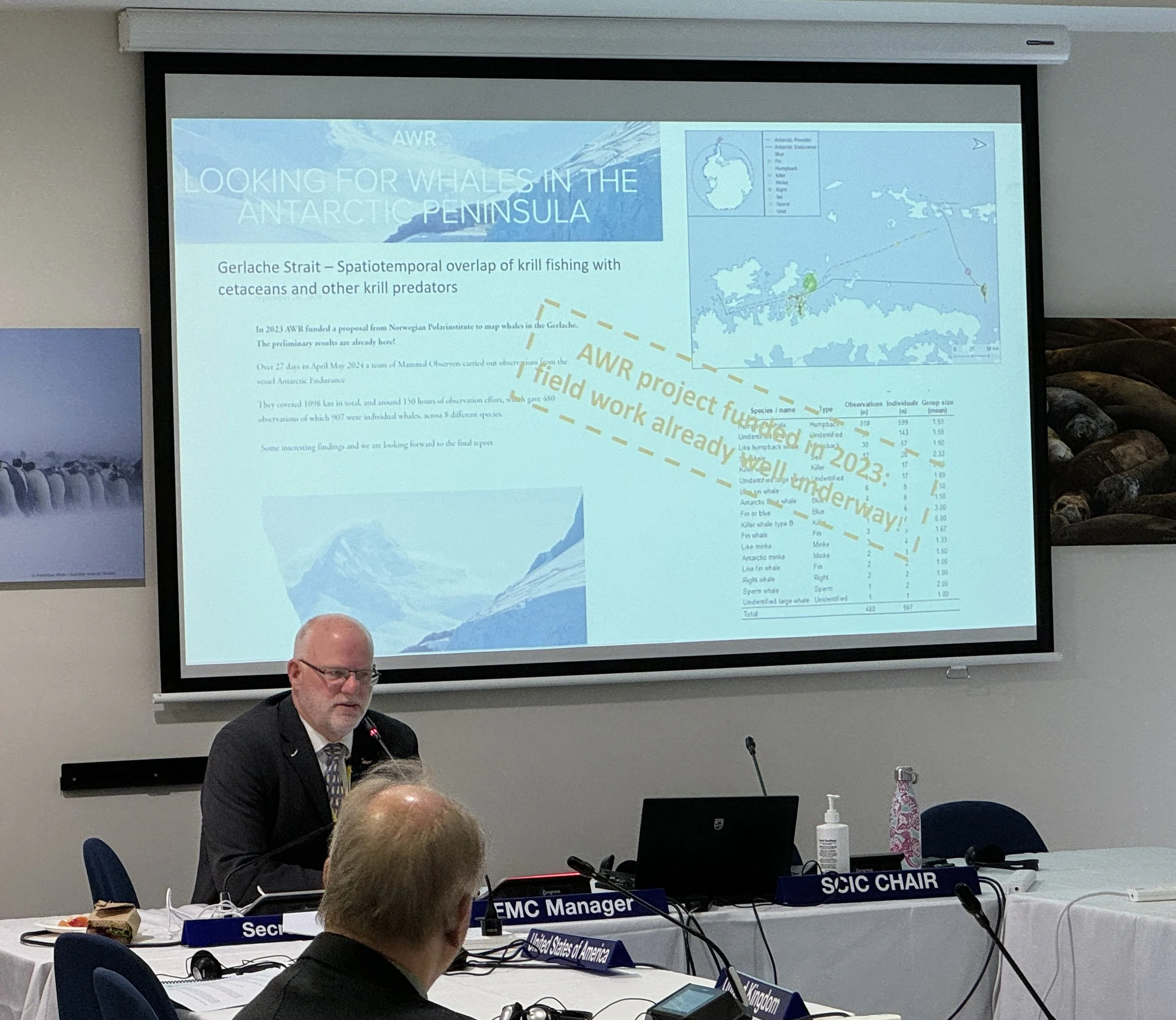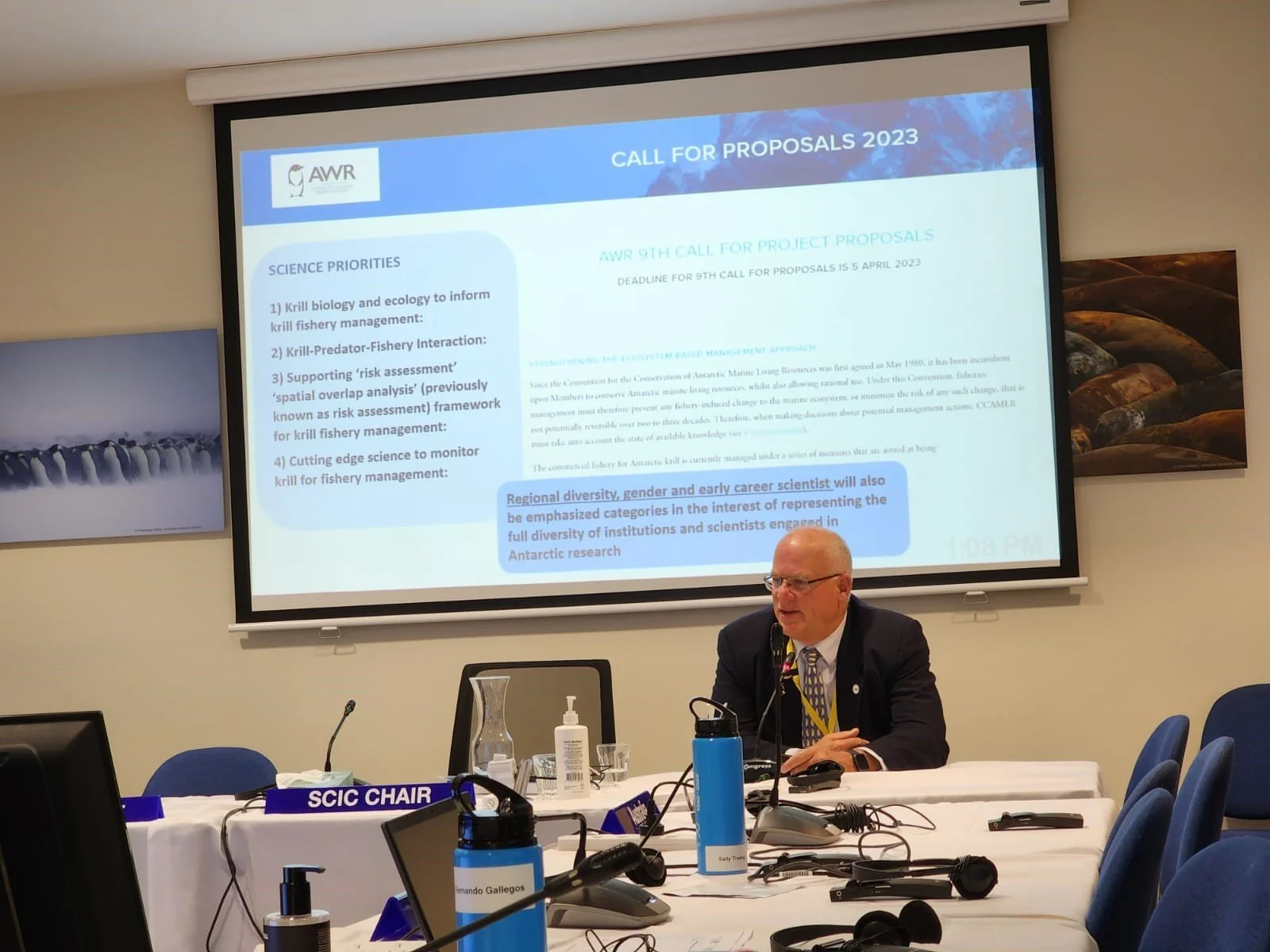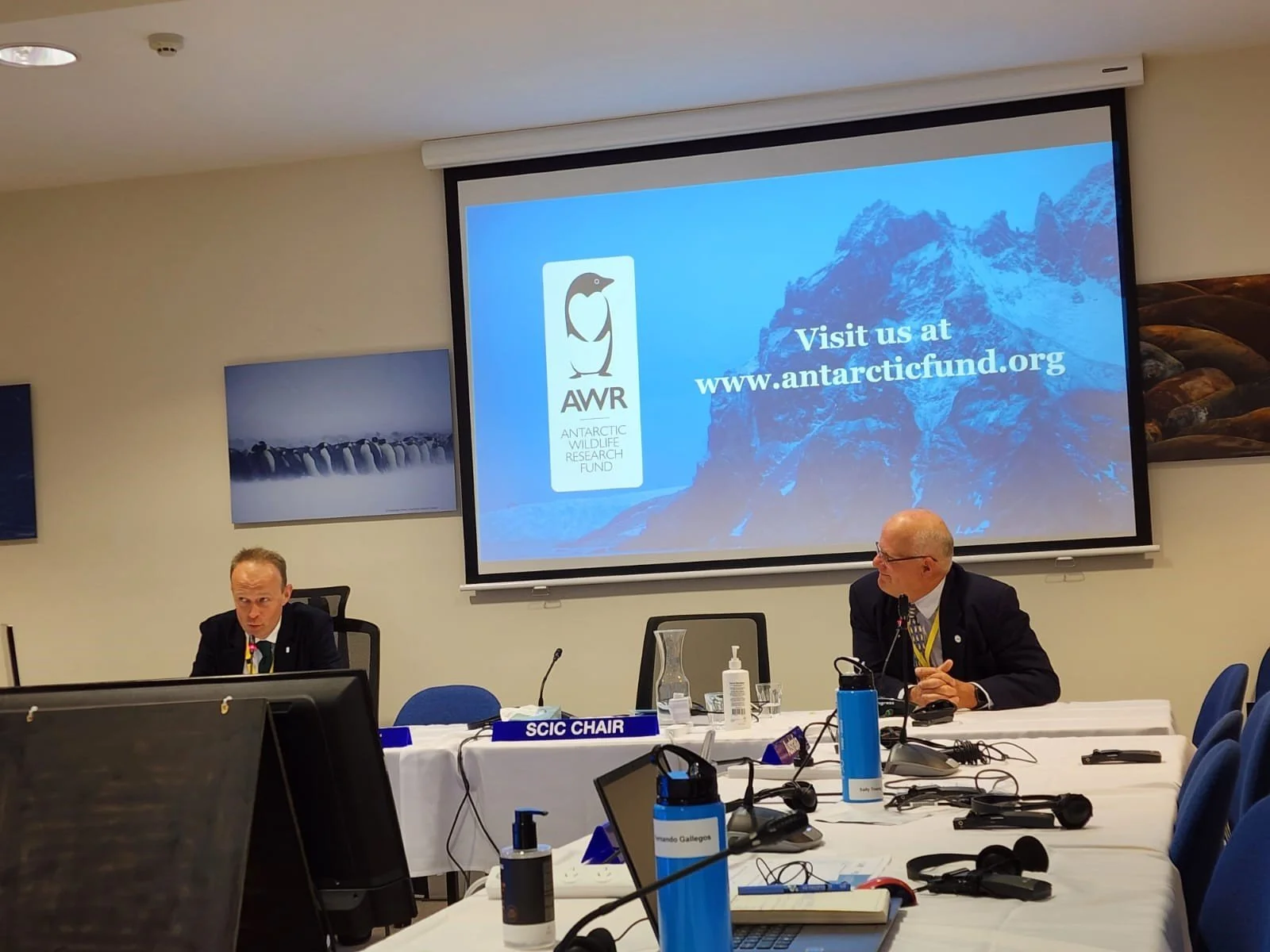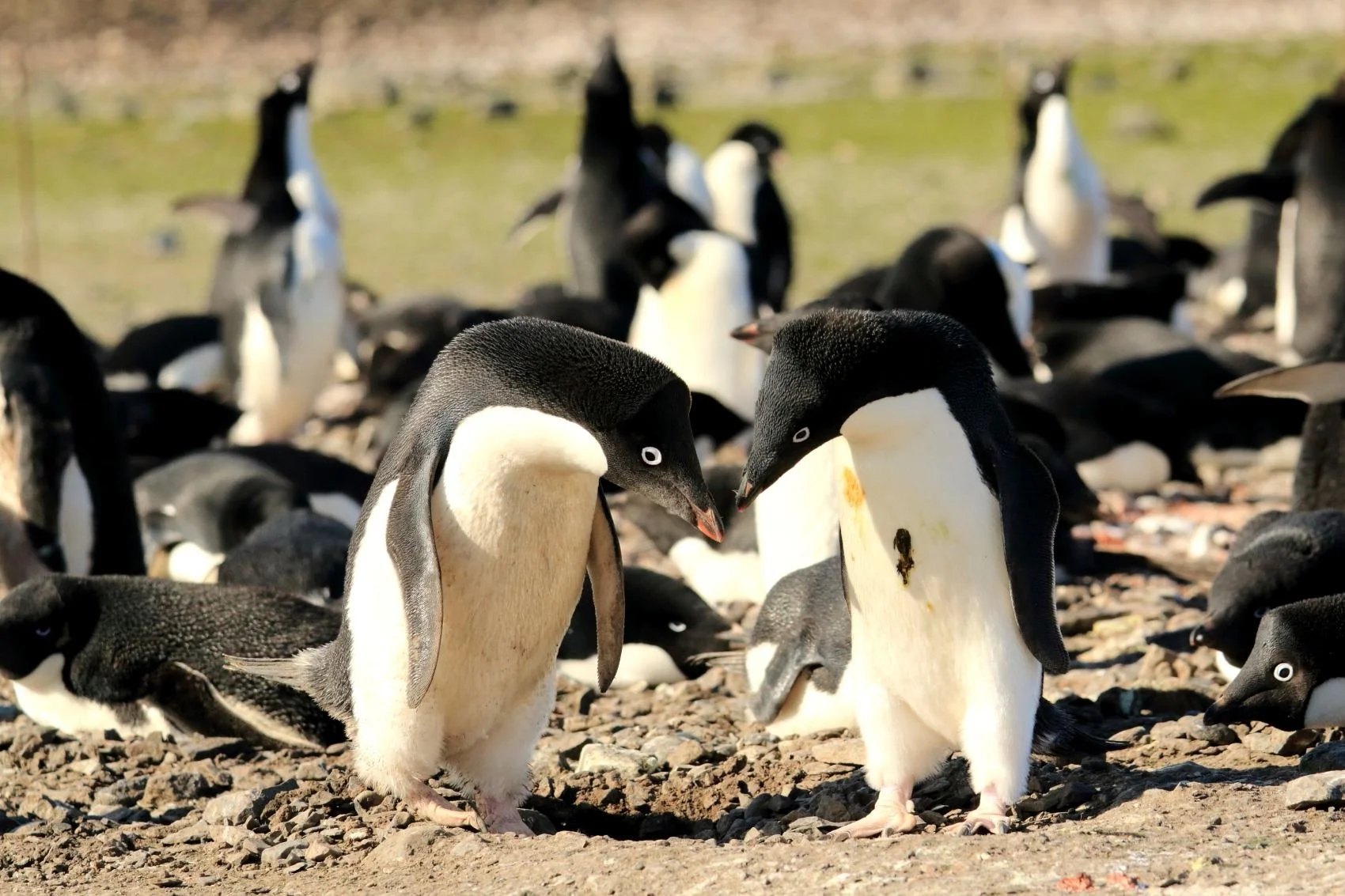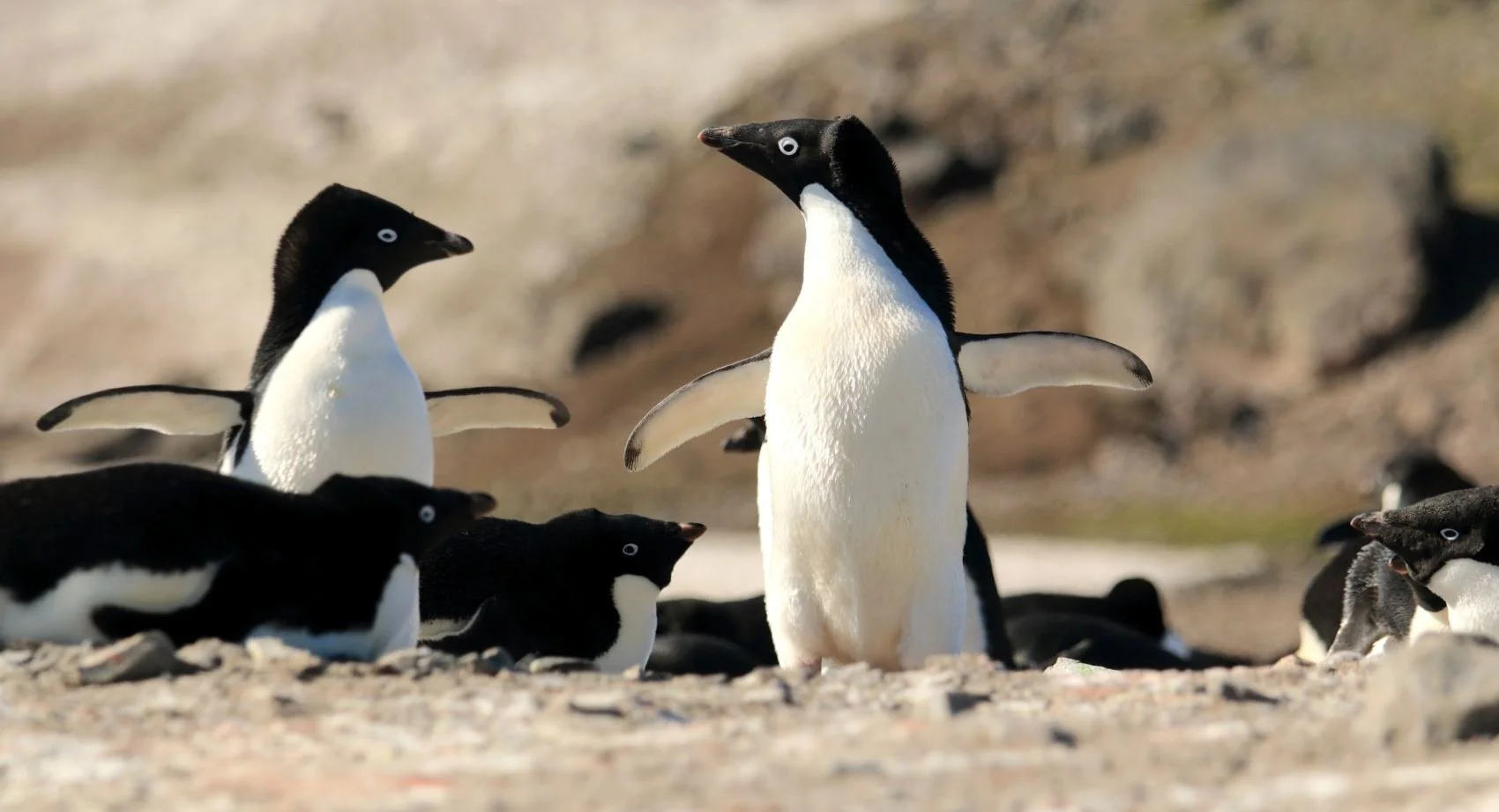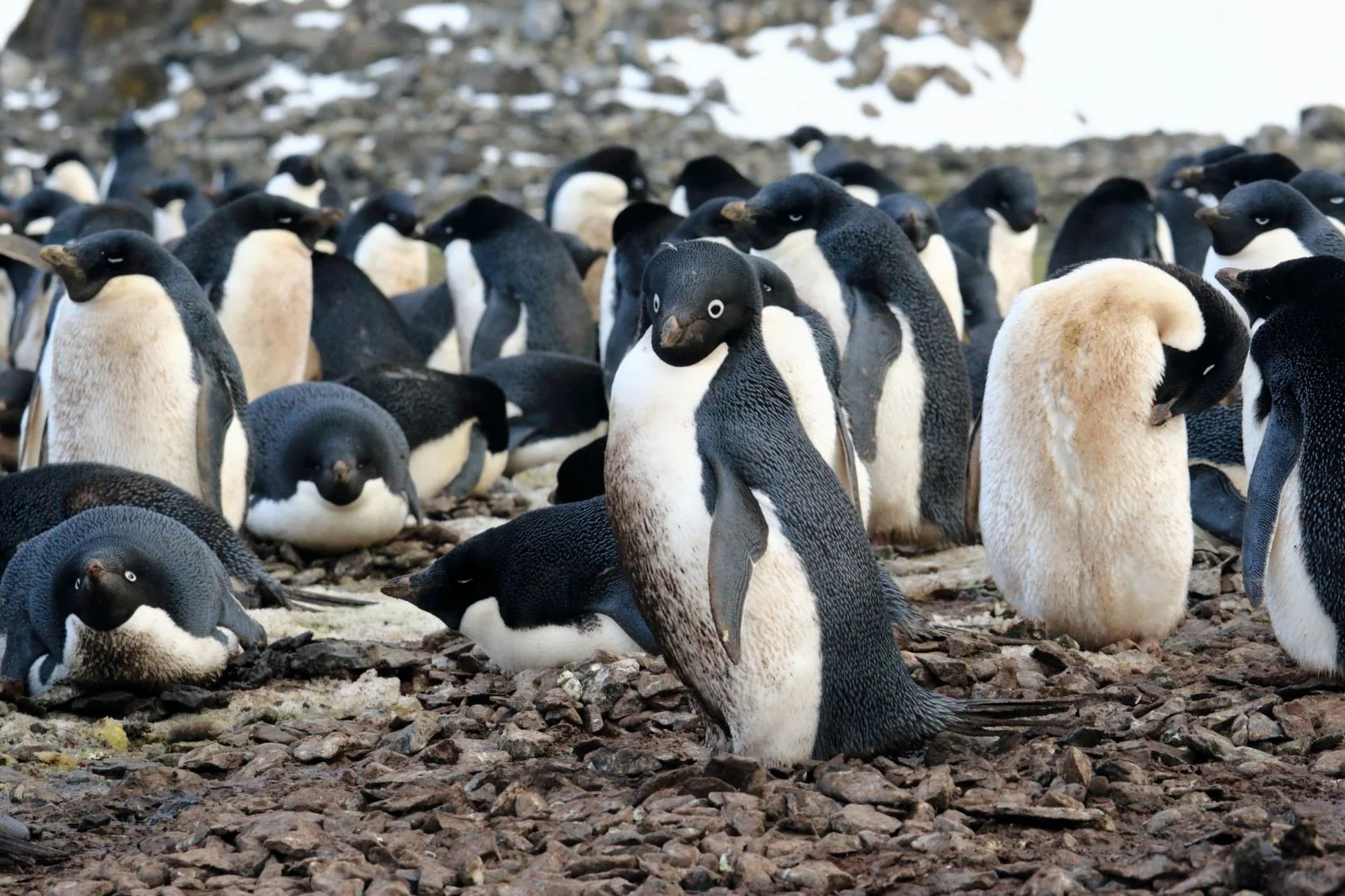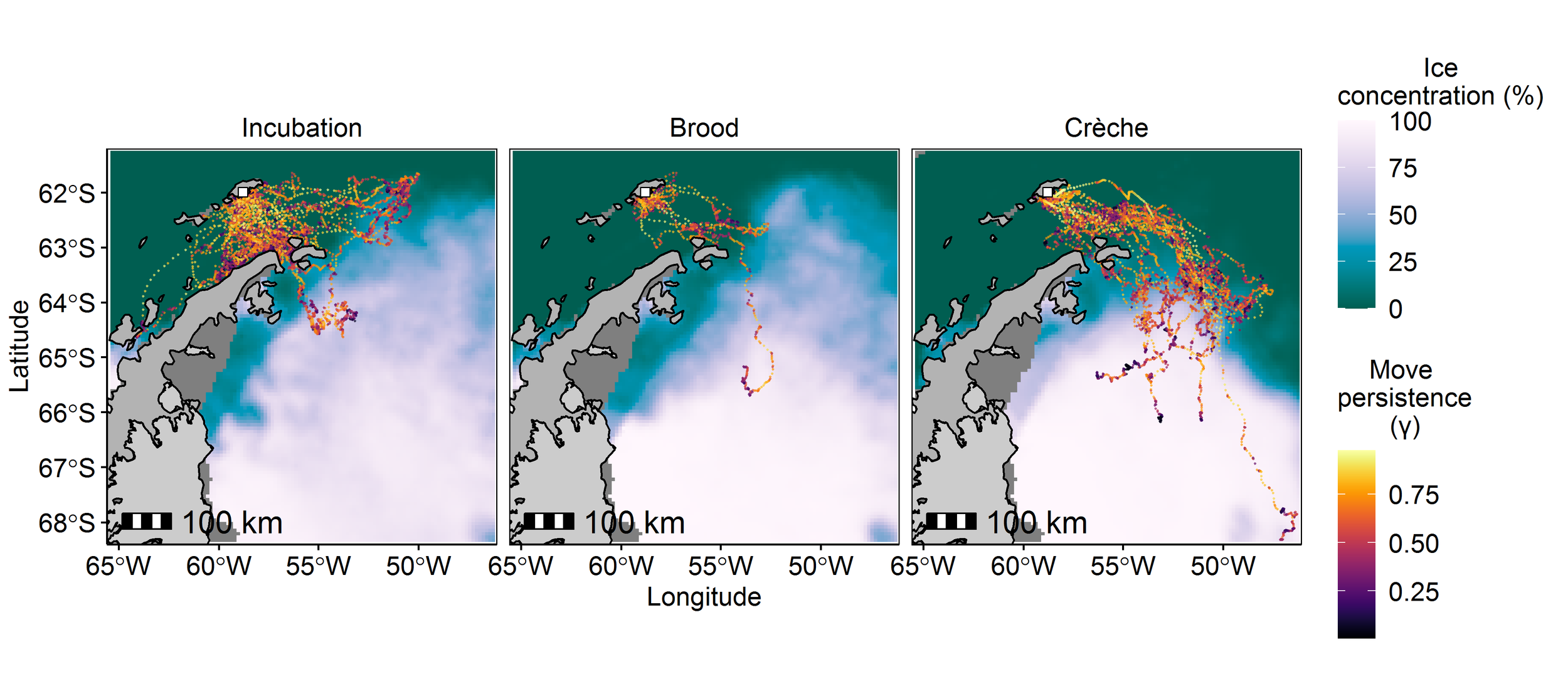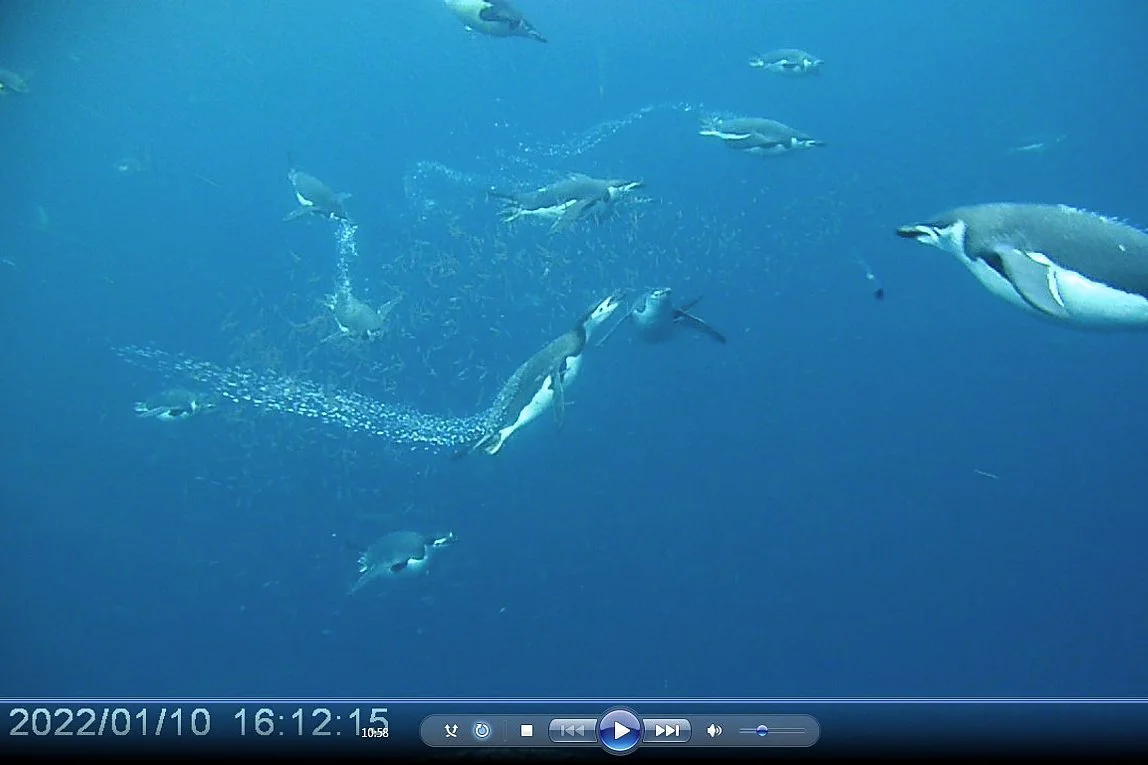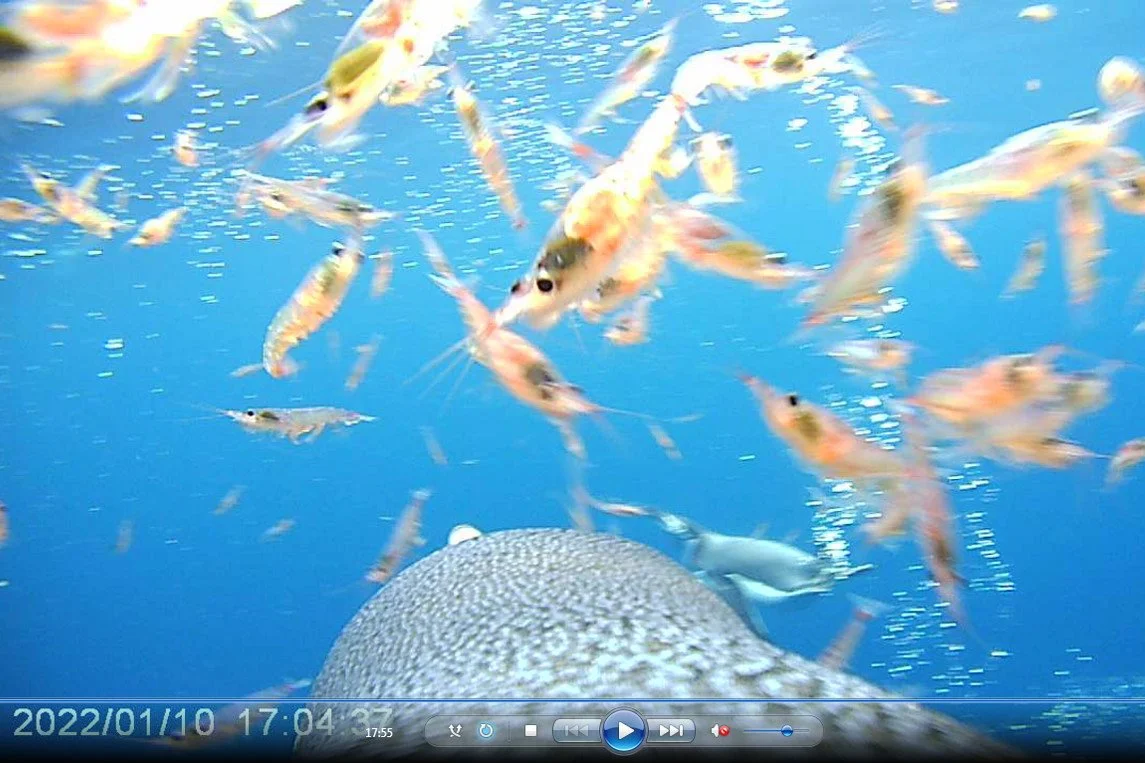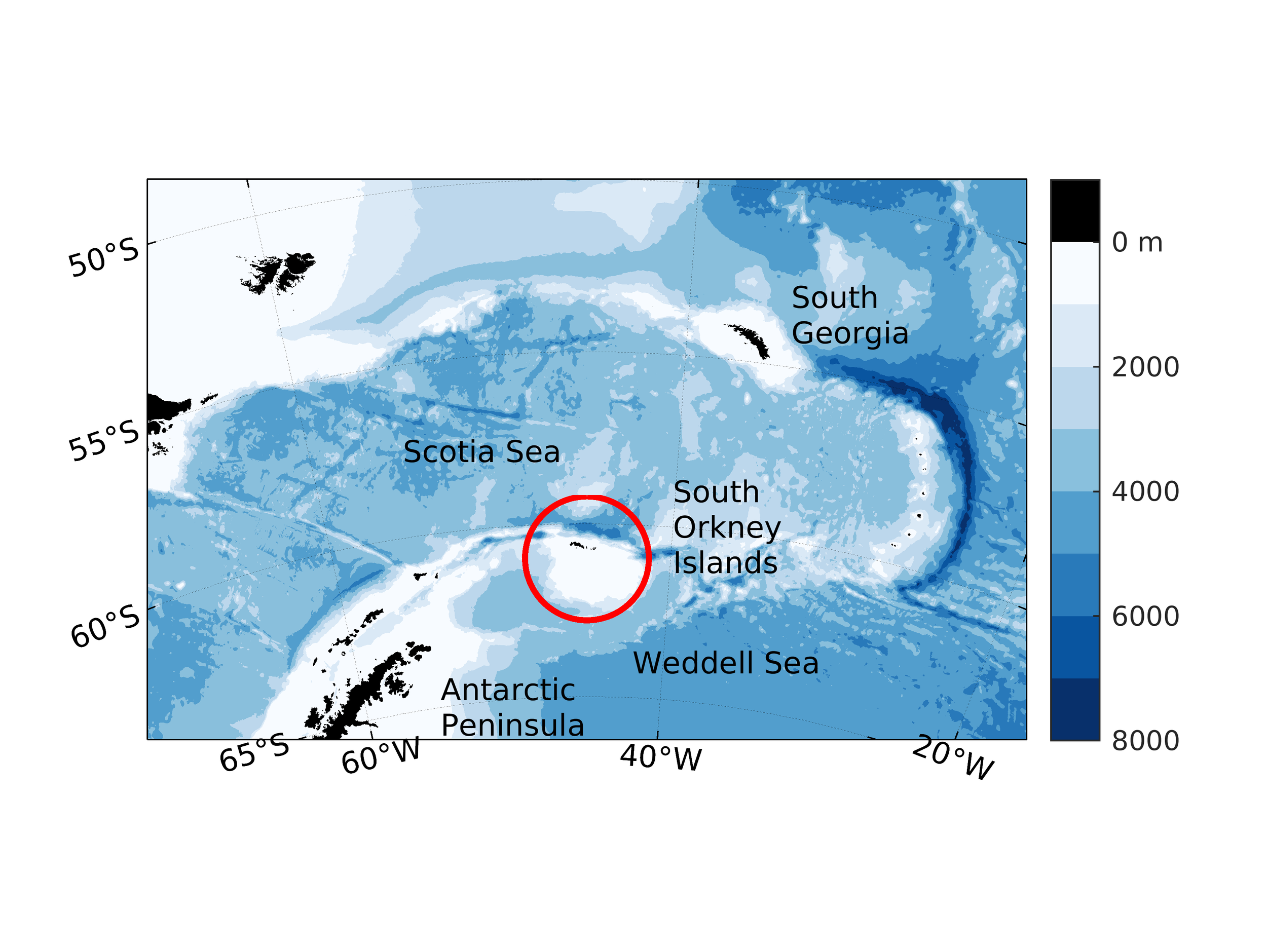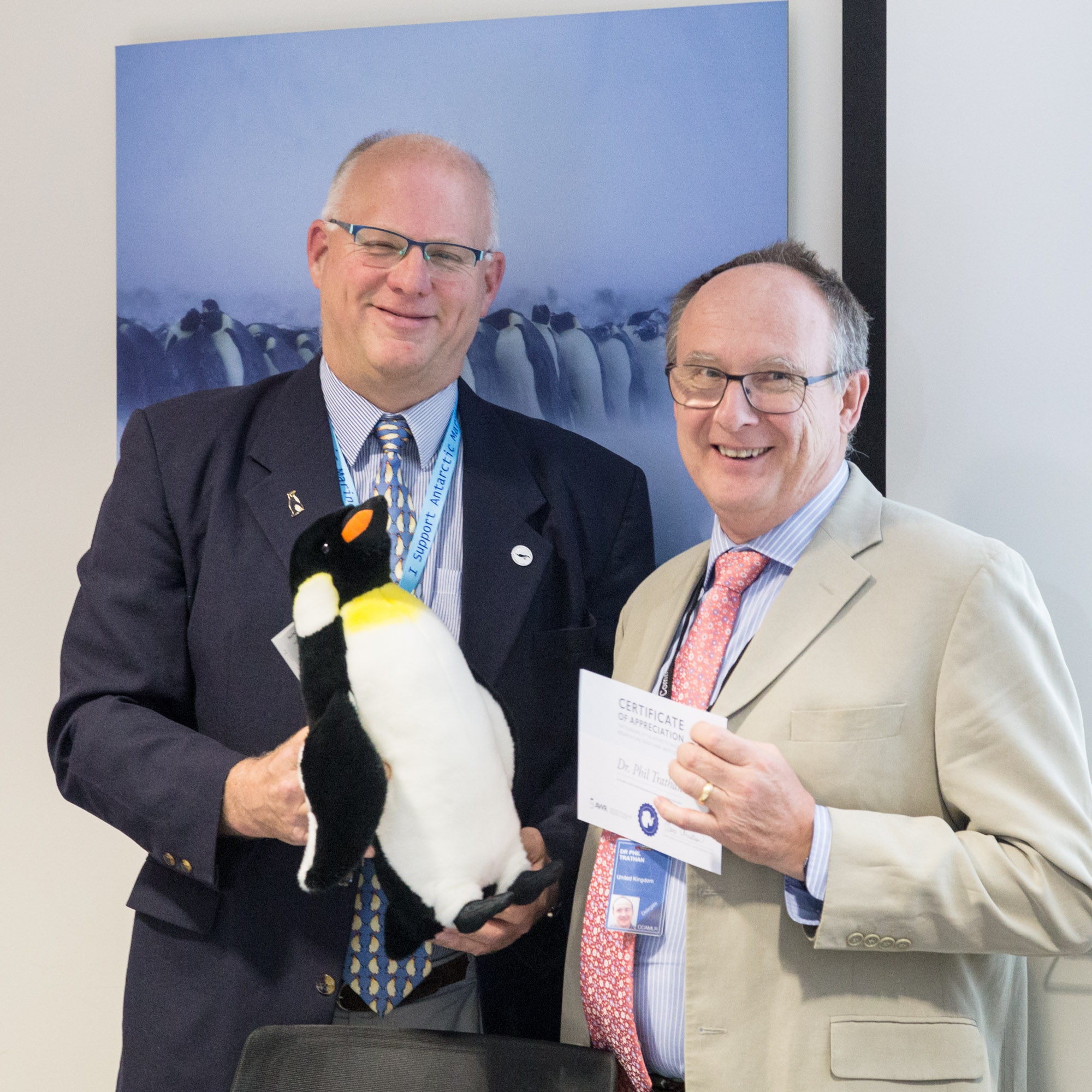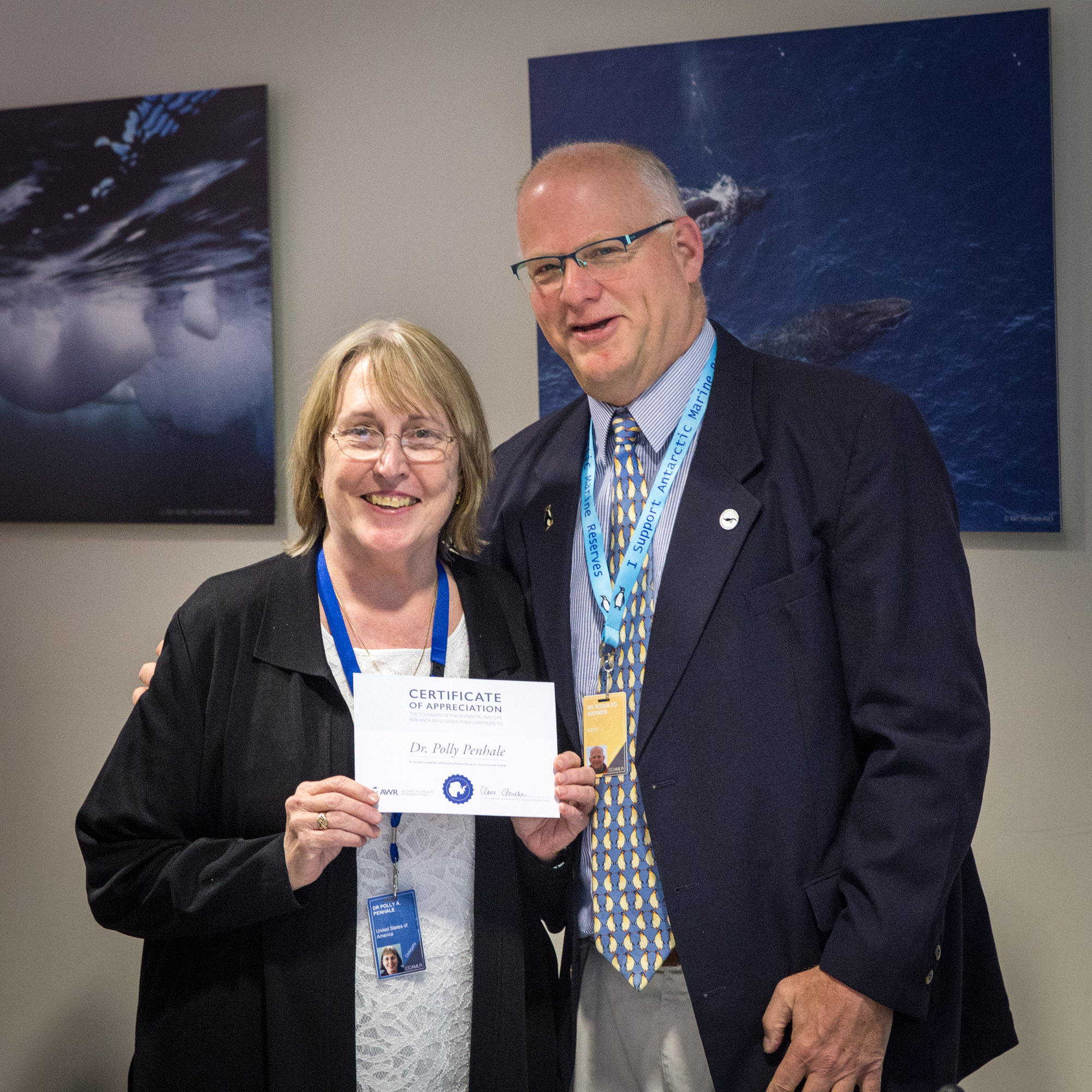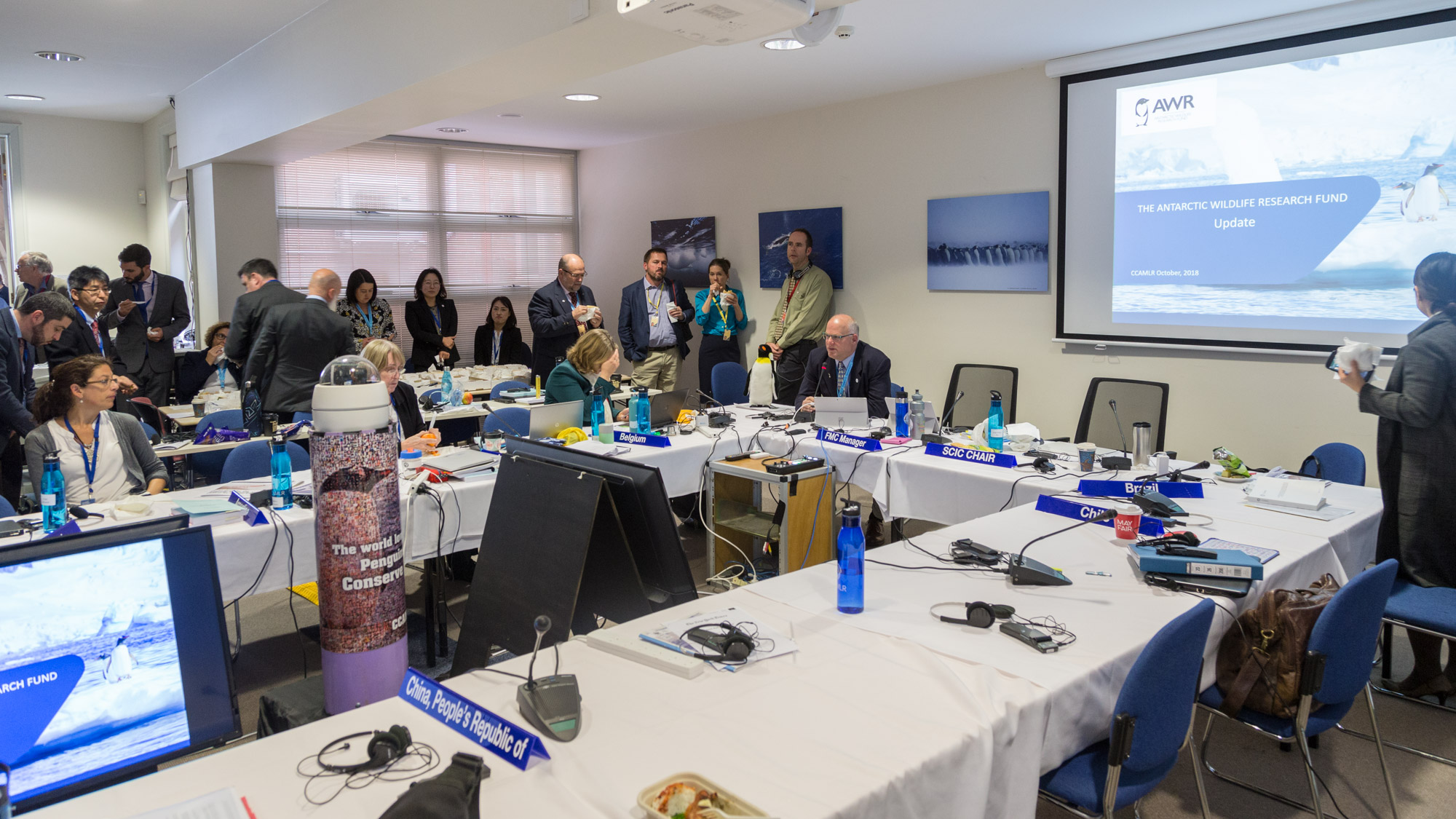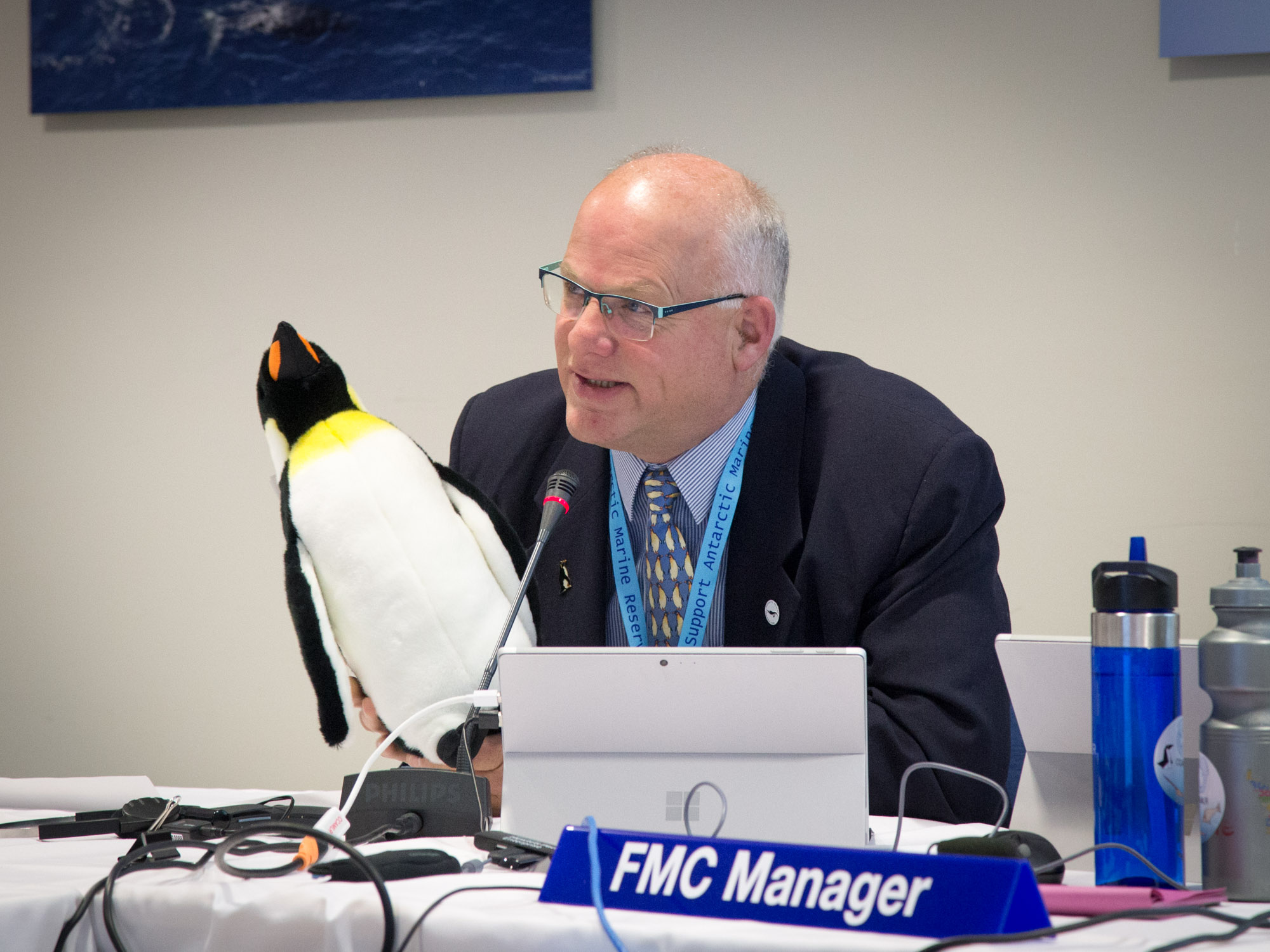AWR launches its 11th Call for Proposals and presents two new research projects that have received grants in 2024 with a total investment of USD$ 157,000.
”In an era of climate change and threats to biodiversity, it is more critical than ever that we obtain the information needed to secure the long-term health of marine ecosystems. AWR is pleased to celebrate a decade of funding research to support protection of the krill-based ecosystem in the Southern Ocean” says Claire Christian, the Chair of AWR’s board.
The two research projects receiving funding from AWR in 2024 are the following:
“High resolution mapping of key foraging areas for Pygoscelis penguins to inform small-scale management of krill fishery in CCAMLR subarea 48.1”
Ana Laura Machado-Gaye
Universidad de la República Uruguay – UdelaR (URUGUAY)
Funded amount: $ 88 320
“Contemporary, fine-scale, and long-term trends of krill predators: estimating Antarctic blue and fin whale call densities for use as indicators in CCAMLR spatial overlap analyses for an ecosystem approach to krill fishery management”
Susannah J. Buchan
Department of ceanography, Universidad de Concepción – UdeC (CHILE)
Funded amount: $ 68 835
“This is another year where AWR managed to support important research projects that will be key for the understanding of the Antarctic marine ecosystem and to contribute to the precautionary management of the Antarctic krill fishery,” said Dr. Rodolfo Werner, AWR Scientific Advisor, and Board member.
The next call for proposals is open
The 11th Call for Proposals is now open for applications. For 2025 AWR is looking for research projects that prioritize the following:
1. Krill biology and ecology to inform krill fishery management
2. Krill-Predator-Fishery Interaction
3. Supporting spatial overlap for krill fishery management
4. Cutting edge science to monitor krill for fishery management
These scientific priorities are identical to the last four years and in line with CCAMLR research priorities. This year again AWR call emphasizes the need to balance regional diversity, gender and early career scientist in the interest of representing the full diversity of institutions and scientists engaged in Antarctic research.
Closing date for AWR’s 11th Call for proposals is April 11, 2025
Read more about AWR here www.antarcticfund.org


